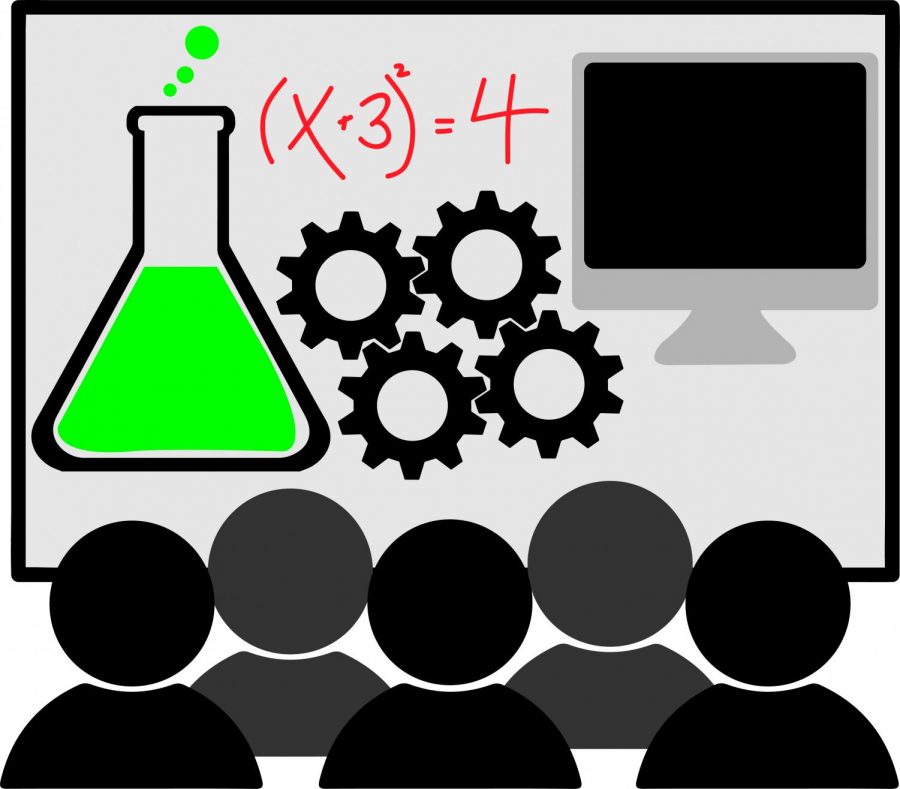State program to encourage more students to pursue STEM
State program to encourage more students pursue STEM
March 10, 2018
As more industries look for employees with backgrounds in science, technology, engineering and math, Illinois is working to better equip its students for STEM careers.
State officials announced a partnership with the Illinois Math and Science Academy Feb. 23 to create the Illinois Bicentennial STEM Fusion campaign. This is just one of Illinois’ programs to celebrate the state’s 200th anniversary, according to a Feb. 23 press release.
The new three-year STEM program will be offered to students at 25 different elementary and middle schools in underserved communities across the state, according to Angela Rowley, director of State and Federal Educator Outreach at the Illinois Math and Science Academy.
An original STEM program, designed for students in fourth to eighth grade, has existed for 20 years and was originally developed as an after-school program. It was created as a teacher professional development program, which focused on how to inspire inquiry and imagination in students, according to Rowley.
“We’re changing the way teachers are teaching science,” she said. “We’re hoping it’s not just for the after-school program, but that it will flow into what they do everyday and have a greater effect all throughout the school.”
Emily Bastedo, a senior adviser to Gov. Bruce Rauner who focuses on education policy, will be a member of the committee to review applications and determine which schools will enter the program.
“Gov. Rauner believes in an education from cradle to career,” Bastedo said. “The most fast-growing careers are in STEM, so the governor wanted to be able to deliver this curriculum to students regardless of race or income level, to be prepared and equipped to succeed in any college or career.”
Kevin Pitts, vice president of Undergraduate Education at the University of Illinois at Urbana-Champaign, will also help review the STEM program applications.
“We’ve talked about this [program having] a multiplier effect,” Pitts said. “When one teacher is trained, that teacher goes out and affects the lives of hundreds of students every year.”
Though the schools have not been chosen, Bastedo said the committee will give more consideration to schools in rural, minority and low-income communities.
According to a Jan. 9 Pew Research Center study, many Americans attribute the limited diversity of the STEM workforce to a lack of encouragement for girls and black and Hispanic children to pursue STEM-based education from an early age. Thirty percent of Americans also said the U.S. is below average in STEM education compared to other countries.
Many organizations are working to combat this reality.
Janet Bandows, president and CEO of the Association for Women in Science—a nonprofit that works to achieve equity and full participation of women in all areas of science, technology and engineering—said its Chicago chapter works in the community to become role models for young girls interested in the STEM fields.
“Kids that don’t have exposure to people in those career fields don’t understand what those careers fields do, so they don’t pursue them,” Koster said. “Our research and work continually shows you’ve got to be inclusive and include everyone and provide equal resources so they have an equal chance to pursue the jobs that they want to, the jobs that are available and going to pay well.”
Rowley said the younger students are exposed to STEM programs, the better.
“If we can ignite that passion in the fourth and fifth grade level, this becomes part of what they normally do,” Rowley said. “If our young girls can see a teacher really enjoying STEM—enjoying biodiversity, chemistry, etc.—it makes the whole thing [much]more approachable.”








